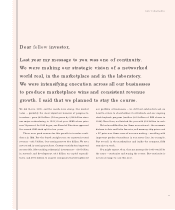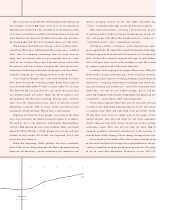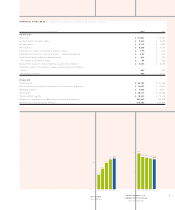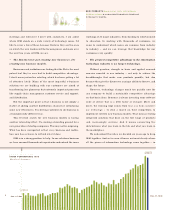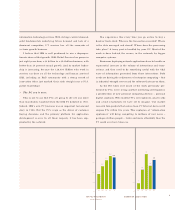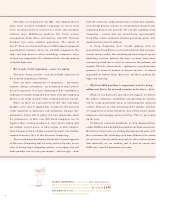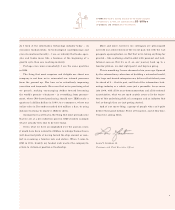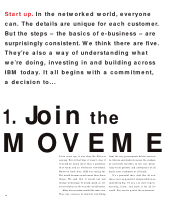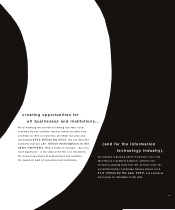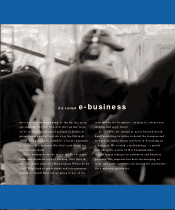IBM 1998 Annual Report Download - page 10
Download and view the complete annual report
Please find page 10 of the 1998 IBM annual report below. You can navigate through the pages in the report by either clicking on the pages listed below, or by using the keyword search tool below to find specific information within the annual report.
8
All of this is very good news for IBM – the company that, in
many ways, invented enterprise computing. In recent years
we’ve invested heavily to reinvent our server and enterprise
software lines. Middleware products like Tivoli systems
management, Lotus Notes and Domino, and DB2 Universal
Database have been standout performers. The advent of
non-PC devices is also benefiting our OEM (original equipment
manufacturer) business, where we sell IBM components like
chips and disk drives to other technology companies, many
of them our competitors. It’s a business that’s already growing
at double-digit rates.
• We’re only at the beginning – more is coming.
Two more things actually – and they’re both extensions of
the network computing revolution.
First, the basic components of computing – processors,
memory, storage, networking – are becoming so small, power-
ful and inexpensive that soon computing will be embedded in
all kinds of everyday things that don’t look at all like computing
devices: cars, roads, machine tools, vending machines, houses.
When all these are connected to the Net, they will make
possible a new class of applications, invisible to end users but
vitally important to businesses and institutions. Imagine this:
Automakers will be able to gather real-time information about
the performance of their cars. Soft drink companies can tie
together their vending machines to learn what’s selling (and
not selling), at what prices, in what regions, at what tempera-
tures. Imagine not just a billion connected people, but a trillion
connected devices. We call this Pervasive Computing.
The second major development looks like the polar opposite
of Pervasive Computing, but it’s really just the flip side. A new
class of heavyweight computing systems is emerging that will
make possible new ways to gain insight – and foresight – from
both the enormous, underutilized stores of data that organiza-
tions already possess, and the sea of information that pervasive
computing devices will generate. We call this capability Deep
Computing – named after our chess-playing supercomputer
Deep Blue, which combined ultrafast processing power with
sophisticated analytical software.
In Deep Computing, we’re already applying what we
learned from Deep Blue to real-world initiatives that were pre-
viously inconceivable, like modeling pharmacological agents,
simulating weather patterns for more accurate forecasting,
and mining databases in retail or insurance for patterns and
insights. What the future holds – solutions in everything from
genomics to financial markets to disease control – is almost
impossible to fathom today. But we’re out there pushing the
edges and learning.
• The Year 2000 problem is important, and it’s being
addressed. But a lot of work remains to be done – fast.
While no one knows for sure what will happen, we believe
the largest companies, institutions and government agencies
will be ready, particularly those in technologically advanced
nations. They got an early start fixing their systems, and they
are using this year to test extensively. Less certain is how smaller
businesses and emerging nations will fare. They’ve got to pick
up the pace.
To help our customers worldwide, we have deployed thou-
sands of IBMers and mobilized thousands of our business partners.
Most of our client teams are working through specific plans with
their customers. We will deploy even more IBMers to the extent
we can (we’ve already asked our people to alter vacation plans).
And internally, we are working just as hard to ensure that
IBM’s own essential operations are ready.
* * *
PATENT LEADERSHIP In 1998, for the sixth consecutive year,
IBM was awarded the most U.S. patents, shattering the previous
record (our own) by more than 40 percent. We received 2,658
U.S. patents in 1998,934 more than in 1997, and we eclipsed
the next closest company by 38 percent.





